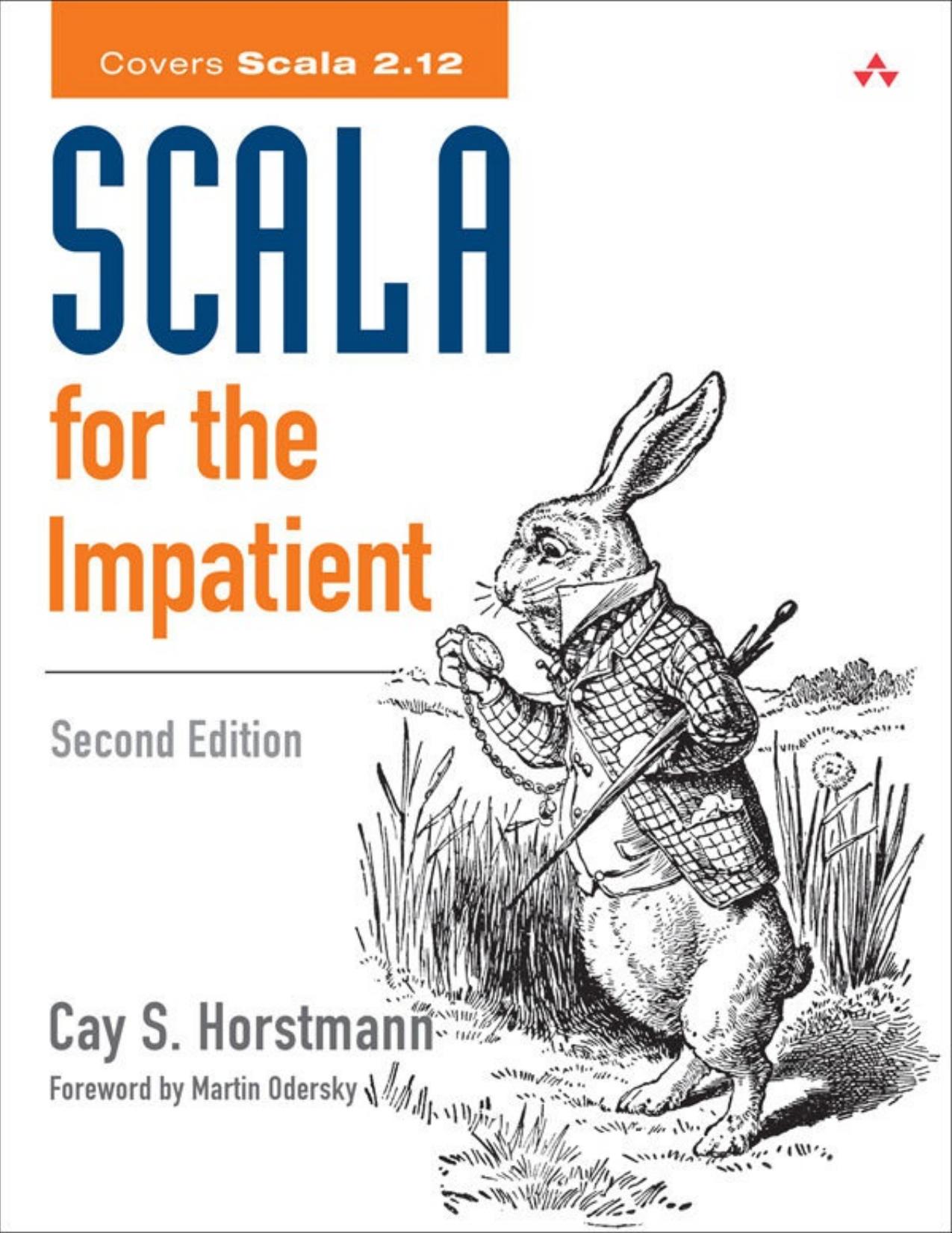Scala for the Impatient by Horstmann Cay S

Author:Horstmann, Cay S. [Horstmann, Cay S.]
Language: eng
Format: epub, azw3, pdf
Publisher: Pearson Education
Published: 2012-03-08T00:00:00+00:00
14.6 Extractors
In the preceding section, you have seen how patterns can match arrays, lists, and tuples. These capabilities are provided by extractors—objects with an unapply or unapplySeq method that extract values from an object. The implementation of these methods is covered in Chapter 11. The unapply method is provided to extract a fixed number of objects, while unapplySeq extracts a sequence whose length can vary.
For example, consider the expression
arr match {
case Array(0, x) => ...
...
}
The Array companion object is an extractor—it defines an unapplySeq method. That method is called with the expression that is being matched, not with what appears to be the parameters in the pattern. The call Array.unapplySeq(arr) yields a sequence of values, namely the values in the array. The first value is compared with zero, and the second one is assigned to x.
Regular expressions provide another good use of extractors. When a regular expression has groups, you can match each group with an extractor pattern. For example:
val pattern = "([0-9]+) ([a-z]+)".r
"99 bottles" match {
case pattern(num, item) => ...
// Sets num to "99", item to "bottles"
}
The call pattern.unapplySeq("99 bottles") yields a sequence of strings that match the groups. These are assigned to the variables num and item.
Note that here the extractor isn’t a companion object but a regular expression object.
Download
Scala for the Impatient by Horstmann Cay S.azw3
Scala for the Impatient by Horstmann Cay S.pdf
This site does not store any files on its server. We only index and link to content provided by other sites. Please contact the content providers to delete copyright contents if any and email us, we'll remove relevant links or contents immediately.
Deep Learning with Python by François Chollet(14831)
The Mikado Method by Ola Ellnestam Daniel Brolund(12083)
Hello! Python by Anthony Briggs(11995)
OCA Java SE 8 Programmer I Certification Guide by Mala Gupta(11393)
Dependency Injection in .NET by Mark Seemann(11175)
Algorithms of the Intelligent Web by Haralambos Marmanis;Dmitry Babenko(9996)
The Well-Grounded Java Developer by Benjamin J. Evans Martijn Verburg(9617)
Grails in Action by Glen Smith Peter Ledbrook(9318)
Secrets of the JavaScript Ninja by John Resig Bear Bibeault(8812)
Test-Driven iOS Development with Swift 4 by Dominik Hauser(8375)
Becoming a Dynamics 365 Finance and Supply Chain Solution Architect by Brent Dawson(7999)
Microservices with Go by Alexander Shuiskov(7772)
Practical Design Patterns for Java Developers by Miroslav Wengner(7660)
Test Automation Engineering Handbook by Manikandan Sambamurthy(7615)
Kotlin in Action by Dmitry Jemerov(7491)
Angular Projects - Third Edition by Aristeidis Bampakos(7094)
The Art of Crafting User Stories by The Art of Crafting User Stories(6557)
NetSuite for Consultants - Second Edition by Peter Ries(6485)
Demystifying Cryptography with OpenSSL 3.0 by Alexei Khlebnikov(6261)
